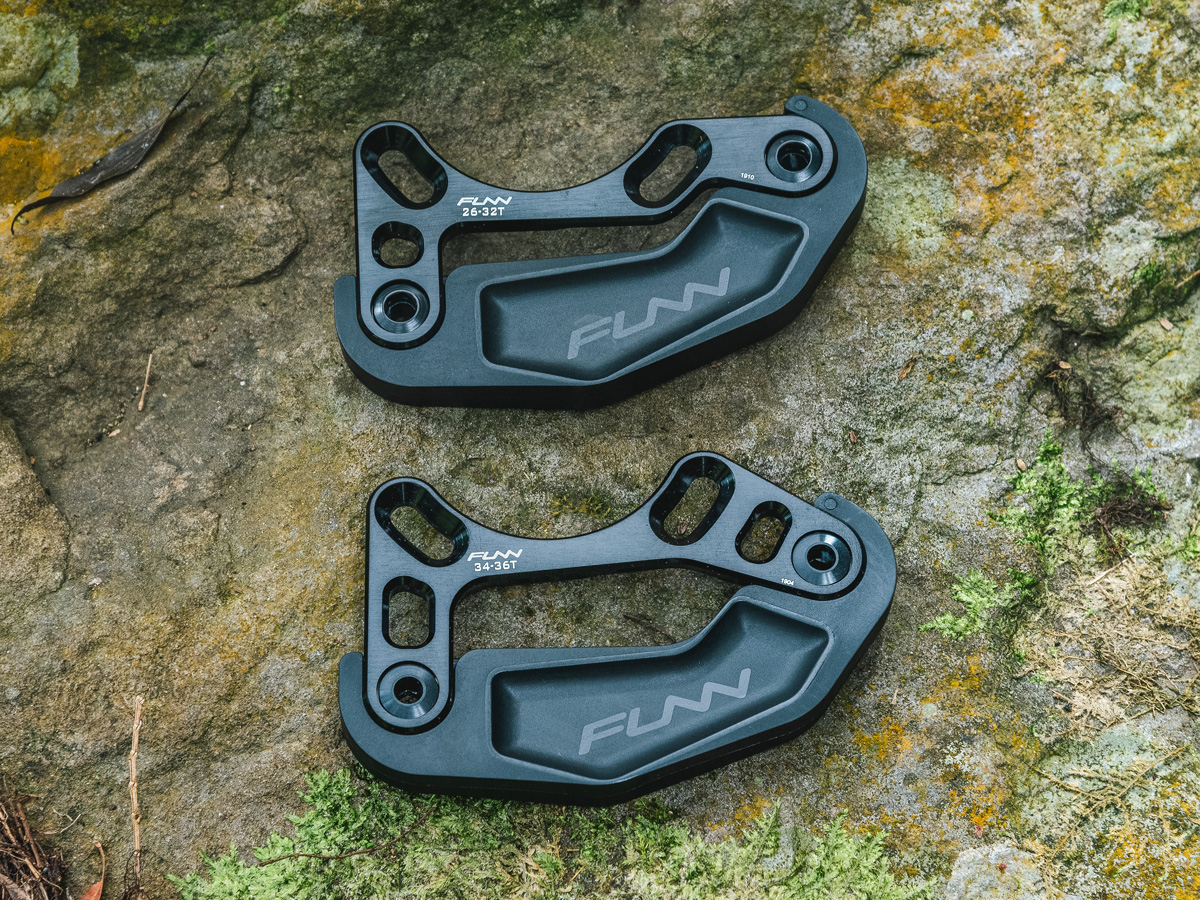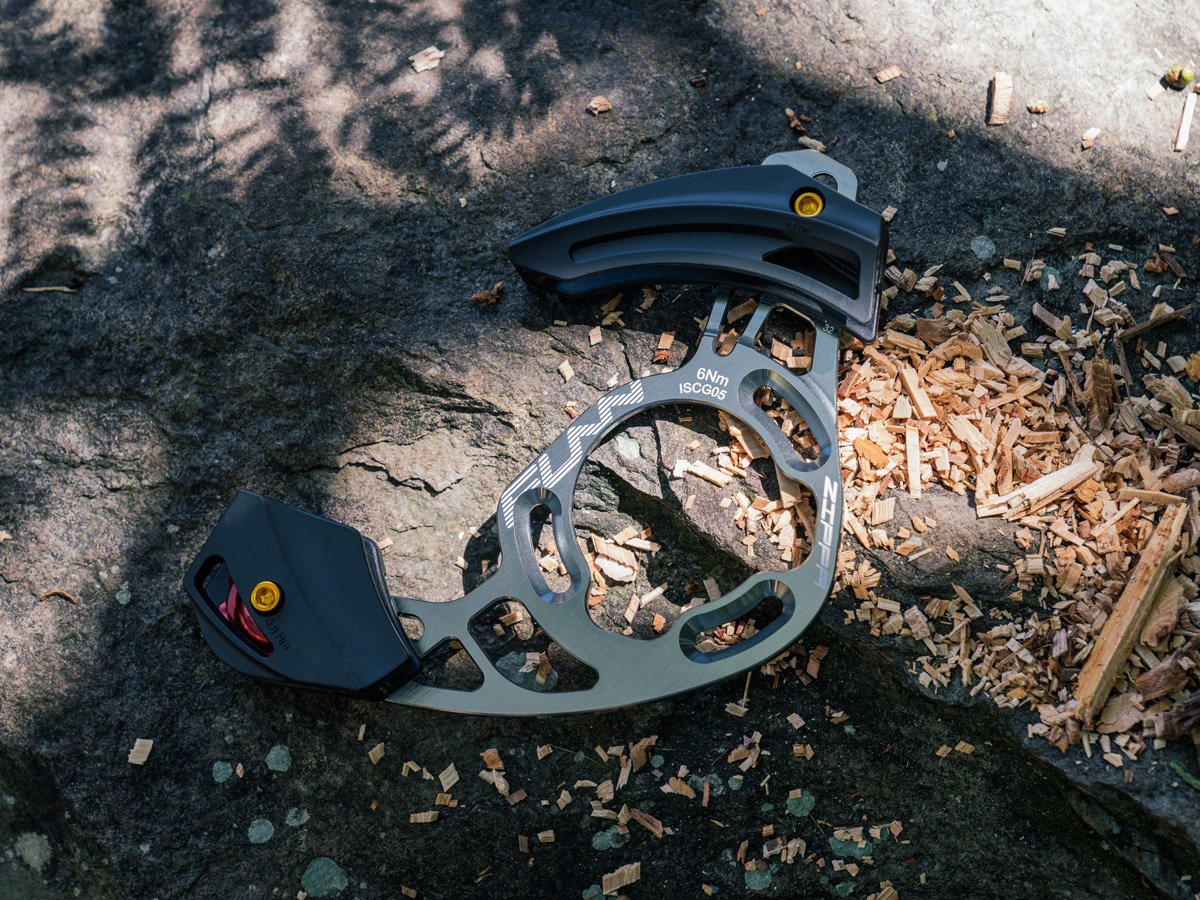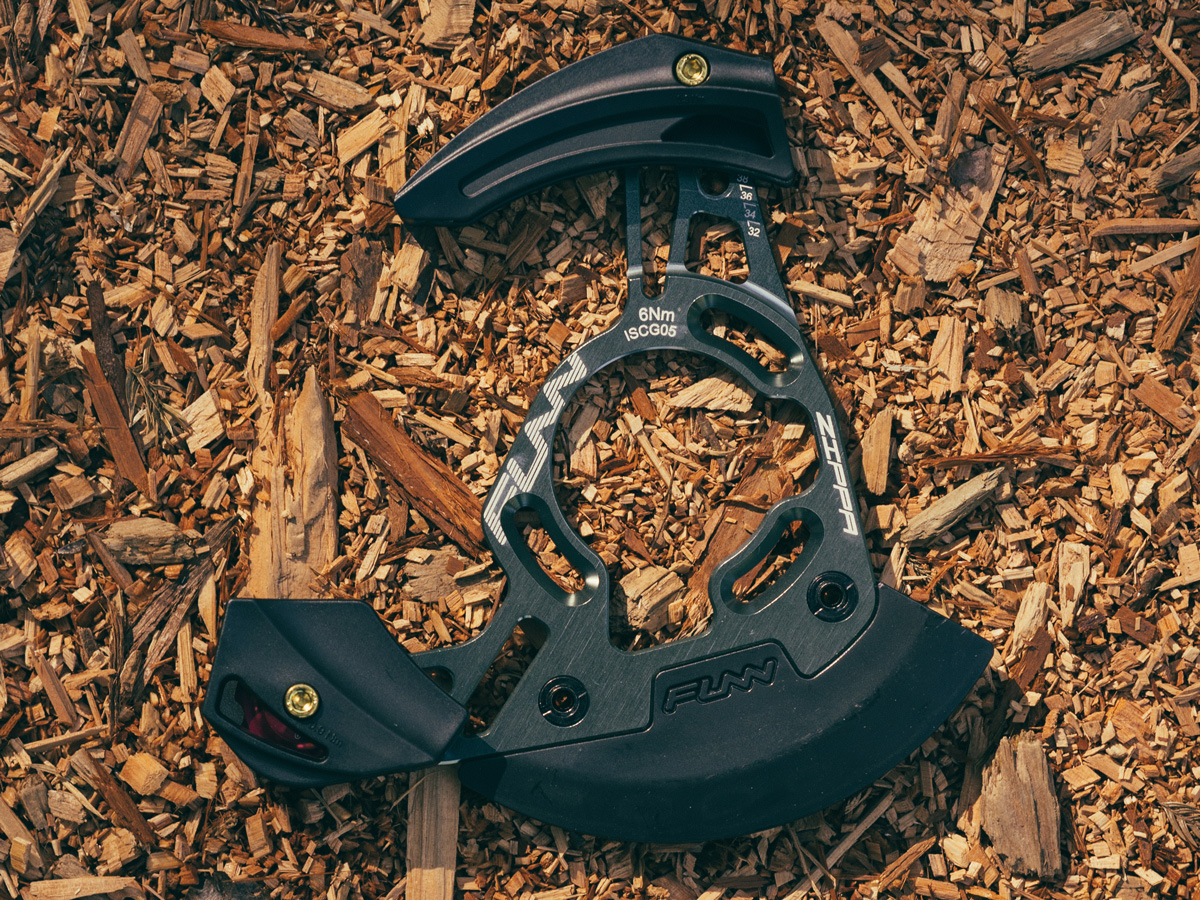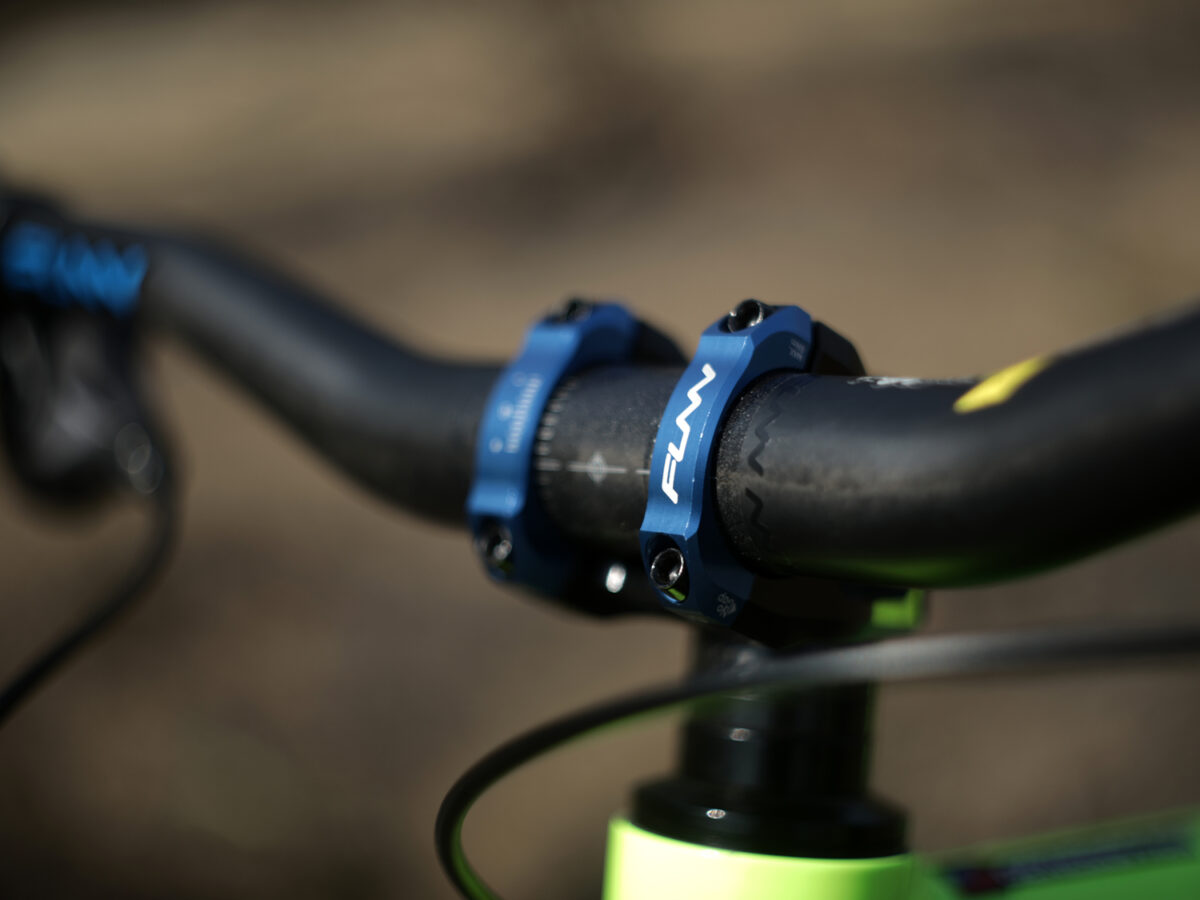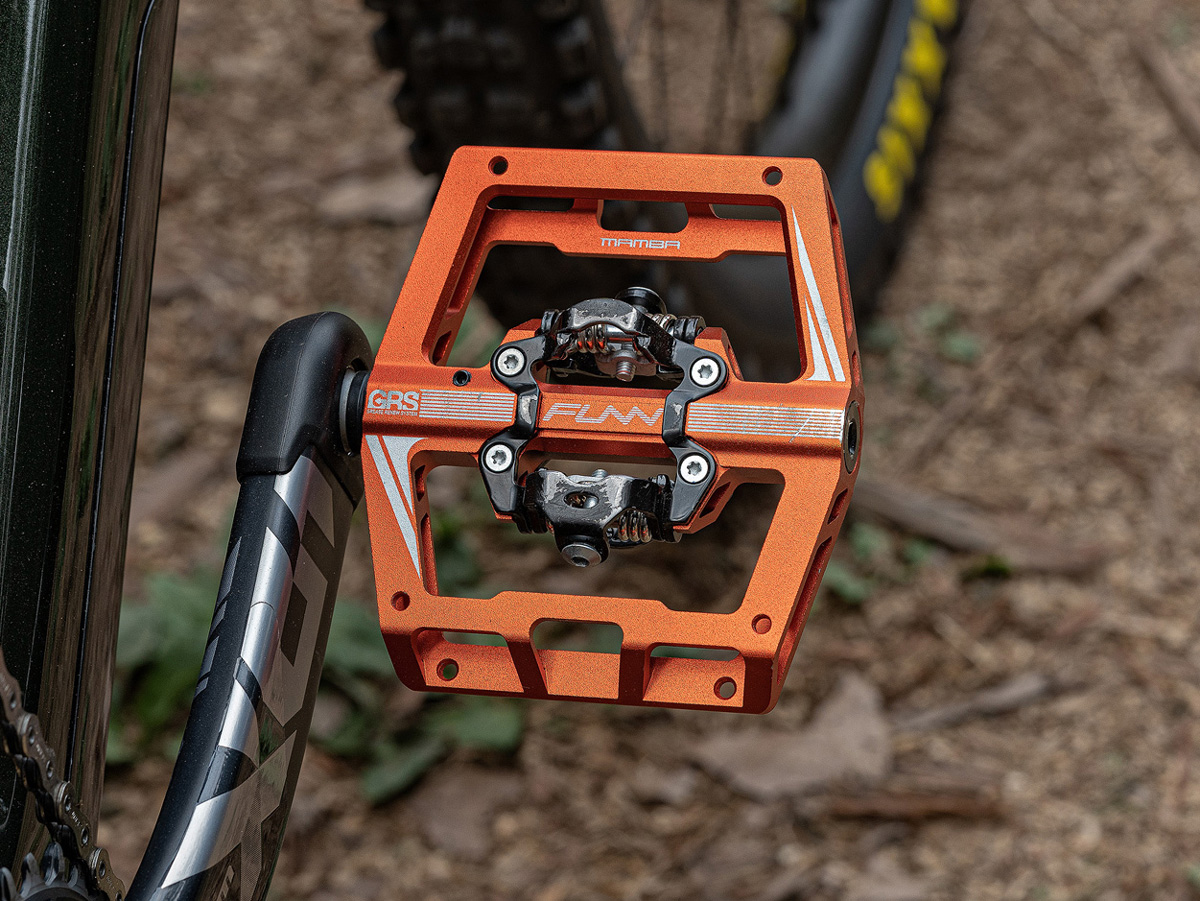Dive into the essential world of mountain biking with a focus on the mountain bike chain guide. This key component of your bike is crucial for a smooth, reliable ride. In this guide, we’ll cover all you need to know about chain guides, catering to both experienced riders and beginners. Understanding the role of a chain guide is vital for anyone eager to confidently navigate the trails.
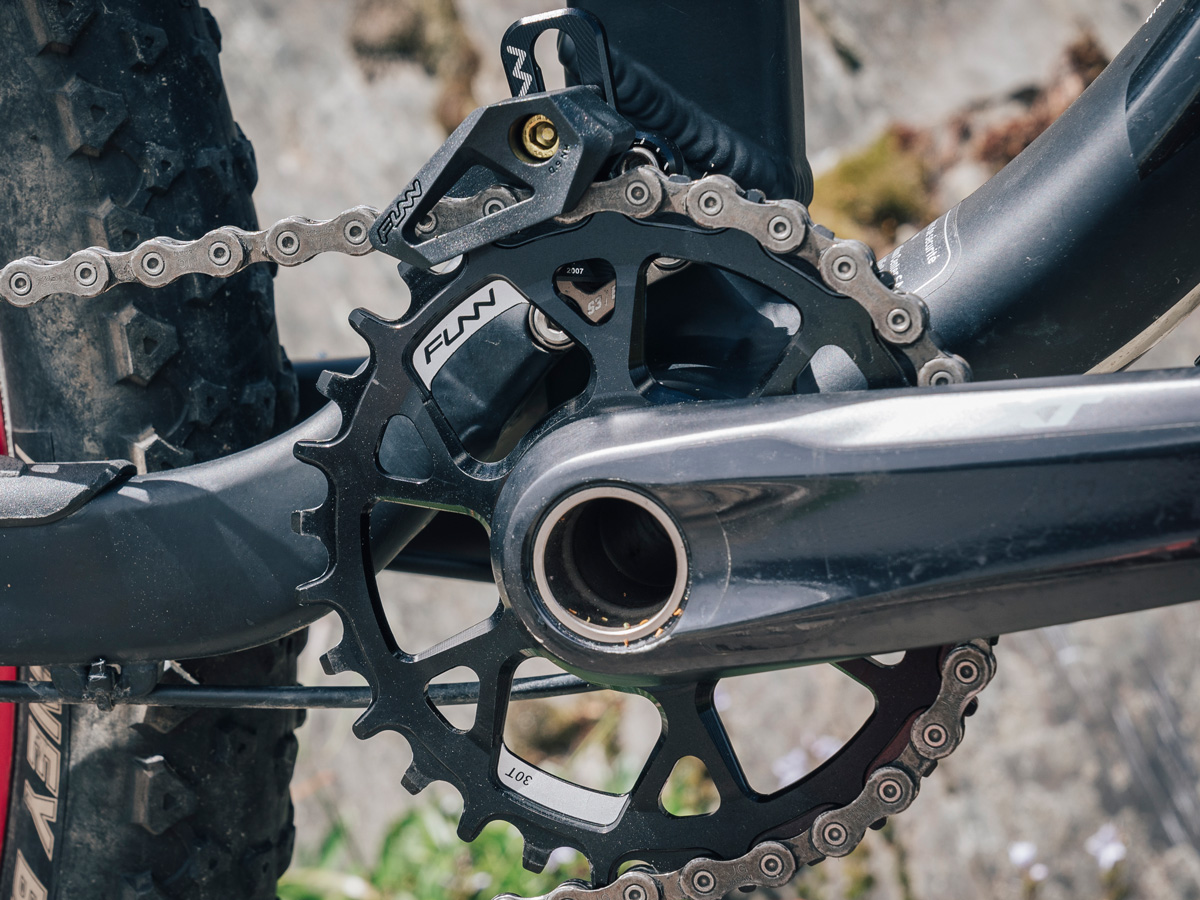
What is A Mountain Bike Chain?
Mountain bike chain guide is a crucial component designed to keep the chain in place on the chainring(s) of a mountain bike. This device is particularly vital in mountain biking, where the terrain is often rough and unpredictable. The chain guide ensures that the chain does not derail from the chainring during aggressive riding, jumps, or when navigating through rocky paths.
Is Chain Guide a Must-Have?
In the world of mountain biking, some parts are essential, while others are optional for customization and performance improvement. One such optional component is the mountain bike chain guide. We believe it’s a valuable addition, especially if you ride on rough terrain or struggle with the chain frequently coming off the chainring.
However, as with any optional bike accessory, it’s essential to weigh the potential downsides of using a chain guide against the benefits they offer. Ultimately, the decision to utilize a chain guide should align with your unique riding style, personal preferences, and the specific demands of your mountain biking adventures.
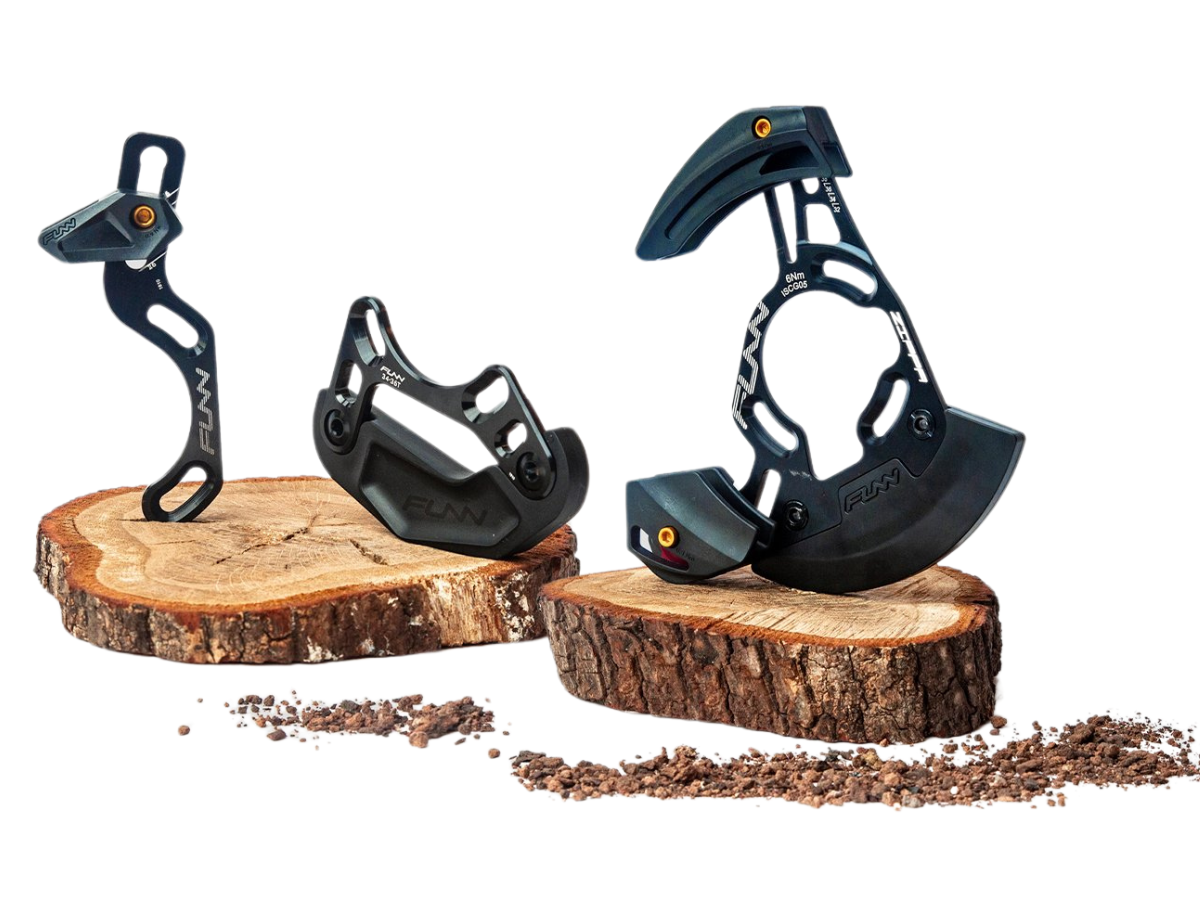
What are the Benefits of a Chain Guide?
Chain guides are not just accessories; they are your silent partners in conquering the trails. They bring a multitude of benefits to your riding experience, making them an integral part of your setup.
Improved Chain Retention
Chain guides play a pivotal role in delivering exceptional chain retention, ensuring that your chain remains firmly wrapped around the chainring, even when you’re confronted with treacherous descents or technical climbs. With the assurance that your chain is securely in place, you can boldly push your limits on demanding trails, fully trusting that your bike will deliver flawless performance.
Protection for Drivetrain Components
Chain guides go beyond their primary role by acting as protective shields against chain slap and potential derailment. This safeguarding not only extends the lifespan of your chainring and derailleur, but also enhances their overall durability. By preventing chain drops and minimizing wear and tear, chain guides prove to be an economical choice in the long run, saving you money on component replacements.
What are the Disadvantages of a Chain Guide?
While chain guides offer several advantages, it’s essential to acknowledge the potential drawbacks they can bring to your mountain biking experience. Here’s a closer look at each of these cons:
Increased Complexity
The incorporation of a chain guide introduces an additional component that necessitates installation, periodic adjustments, and maintenance. While some riders welcome these tasks, riders favoring a straightforward and minimalist approach to their biking gear may find this added complexity somewhat challenging or inconvenient. Furthermore, compatibility can be a concern, as not all chain guides seamlessly align with every bike frame and drivetrain setup, occasionally leading to difficulties in finding the perfect fit.
Additional Weight and Cost
Chain guides contribute to the overall weight of the bike, a factor that may raise concerns for riders who prioritize a lightweight setup, especially in disciplines like cross-country racing where every ounce matters. Additionally, it’s important to factor in the cost aspect – high-quality chain guides can be an additional expense, increasing the overall investment in your bike setup.
Exploring the Different Types of Chain Guides
When it comes to chain guides for your mountain bike, knowing the various types available is crucial for making the right choice based on your riding style and bike setup. Let’s delve into the several main types to consider, each with its own purpose, perfectly adapted to different terrains and biking styles.
Upper Chain Guides
These chain guides are all about simplicity and are perfect for riders who stick to less aggressive trails. They focus on keeping your chain snugly in place on the upper part of the chainring, preventing it from bouncing off during your rides. Our product lineup features models such as the Zippa Lite ISCG05, Zippa Lite D-Type, Zippa Lite E-Type, Zippa Lite BSA and Zippa Lite ES.
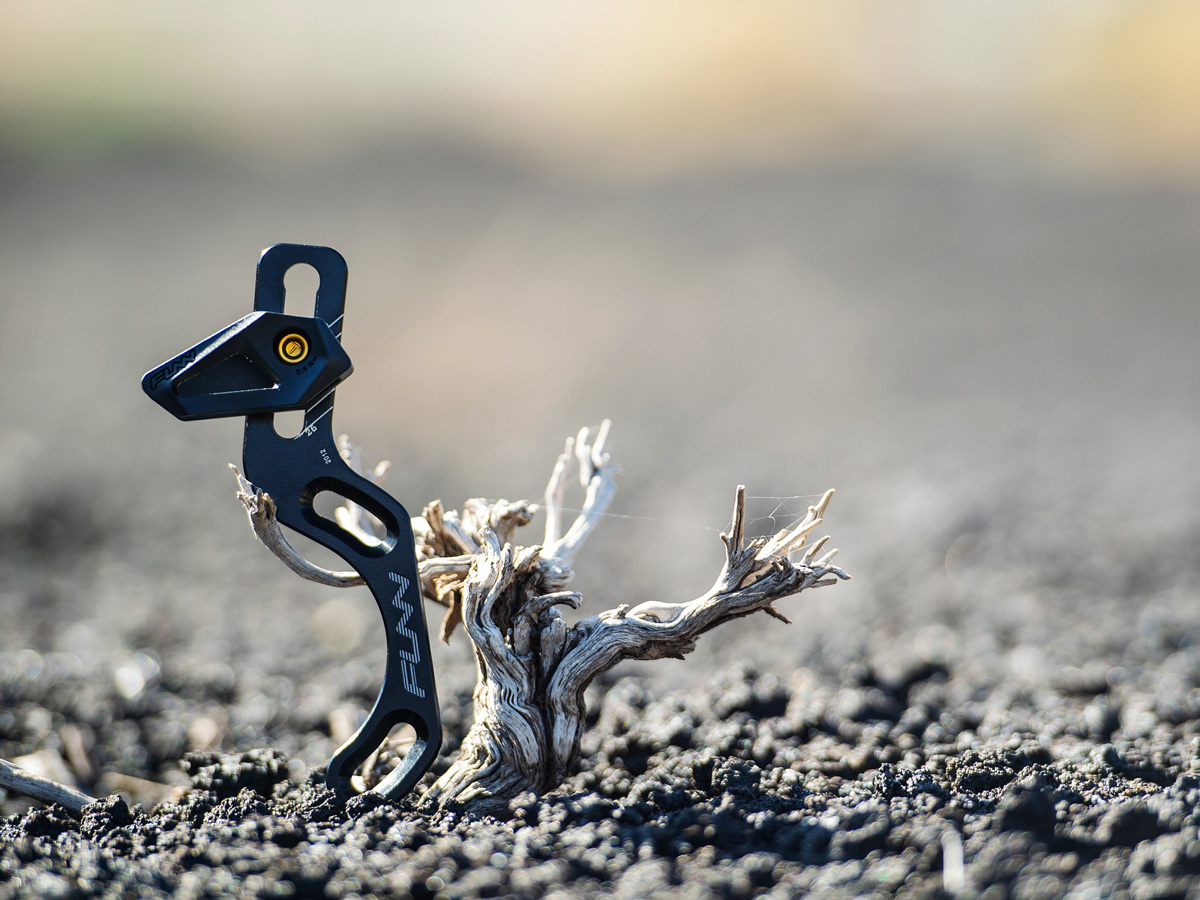
Bash guard
While a bash guard doesn’t prevent the chain from falling off, it’s a vital accessory for riders tackling rough terrain and obstacles. Serving as a protective barrier for the chainring, it absorbs impacts from rocks, roots, and trail debris, safeguarding against damage. This protection contributes to smoother, more reliable rides.
Full Chain Guides
For riders who thrive on aggressive downhill or enduro biking, full chain guides are the top choice. These guides, like our Zippa AM, offer comprehensive protection by combining both upper and lower guides.
Full Chain Guide with Bash Guard
For those who dare to tackle the toughest terrains, bash guards with chain guides are your trusted companions. These guides, like our Zippa DH, not only keep your chain secure but also offer an extra layer of protection by guarding your chainring against impacts and obstacles.
Upper Chain Guide with Bash Guard
Ideal for riders who engage in a mix of aggressive and moderate biking, the upper chain guide with bash guard offers a balanced solution. It keeps the chain in place on the upper part of the chainring while providing essential protection against frontal impacts.
Our Zippa Lite ISCG05 chain guide, when paired with Zippa Lite bash guard, is perfect for those who need reliable chain retention and moderate protection without the weight and complexity of a full chain guide system.

Mounting Standards for Chain Guides
Understanding the different ways chain guides can be attached to your mountain bike is key to ensuring they match up correctly with your bike. Following this, we are going to introduce several common mounting standards to help you find the best fit for your mountain bike.
ISCG05 Mounts
Ideal for aggressive riding styles, these mounts involve direct attachment to the bike’s frame. Frames equipped with ISCG05 tabs, have pre-drilled holes around the bottom bracket, with a hole spacing of 56mm, ensuring a secure and stable fit. An example from our product range is the Zippa Lite ISCG05. This standard is commonly found on modern mountain bikes designed for downhill, enduro, and freeride disciplines, where robust chain retention is crucial.
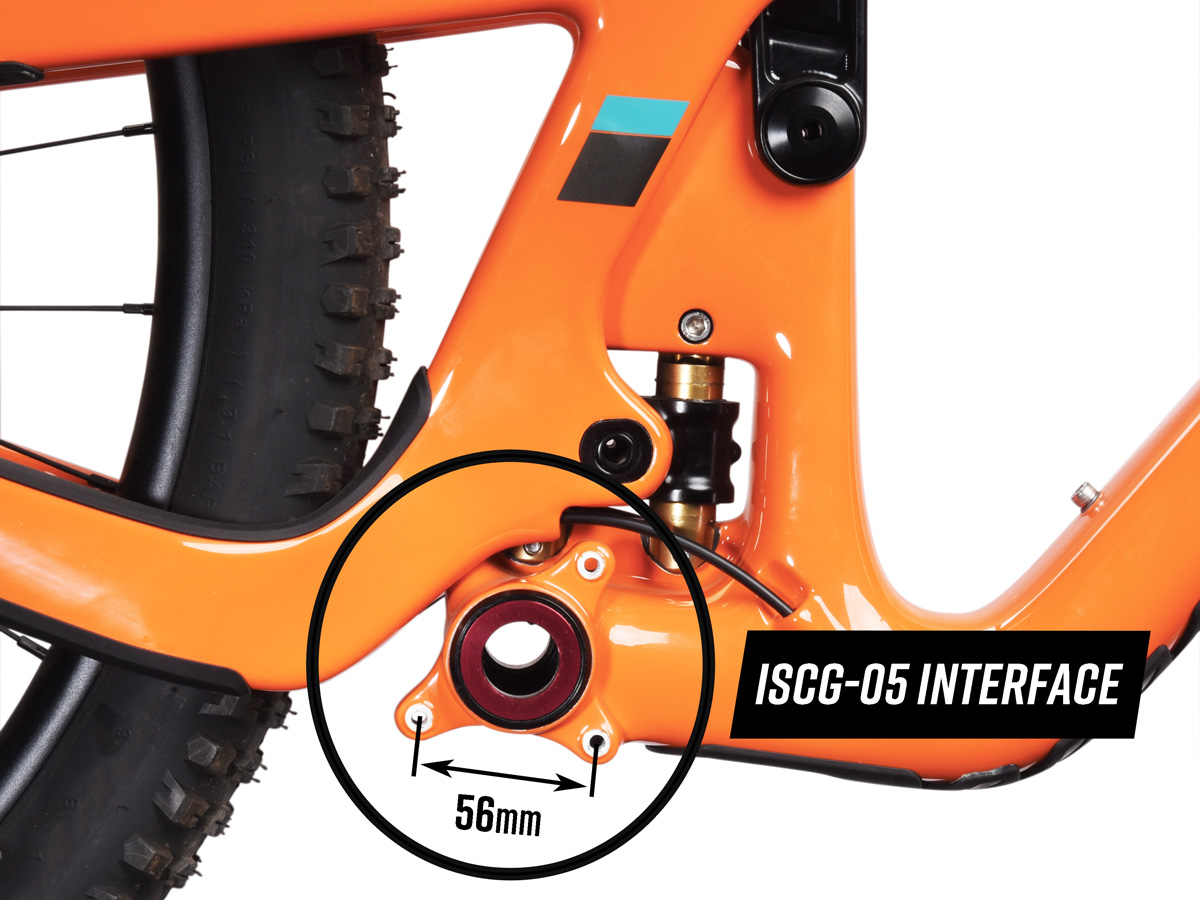
E-Type Mount (SRAM S3 Direct Mount)
This mount is designed for bikes with Shimano E-Type front derailleur threads, featuring a hole spacing of 22.7mm. It allows for a direct attachment of the chain guide without the need for a bottom bracket plate, offering a cleaner and more integrated look. The E-Type mount is particularly suitable for older or more traditional frame designs that may not have ISCG tabs or a direct mount option. An example from our range is the Zippa Lite E-Type, which offers reliable chain retention for bikes with this specific frame design.
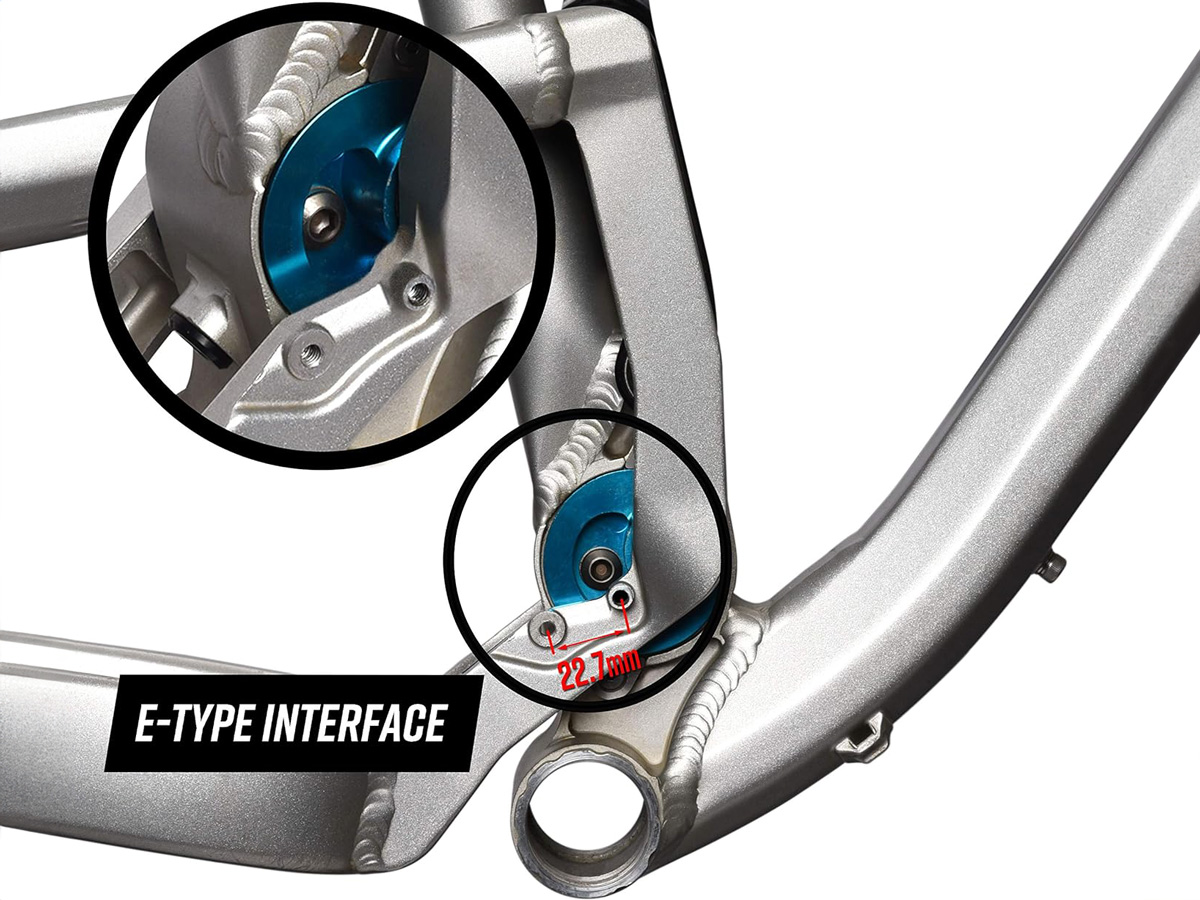
D-Type Mount
The D-Type, or direct mount, attaches the chain guide directly to the bike frame at a specific mounting point, usually where the front derailleur would be located. This system is ideal for bikes designed with a specific interface on the seat tube for a clean and integrated setup. D-Type mounts are often found on newer mountain bikes, especially those designed for cross-country and trail riding. They provide a streamlined and efficient way to mount chain guides, as seen in our Zippa Lite D-Type model.
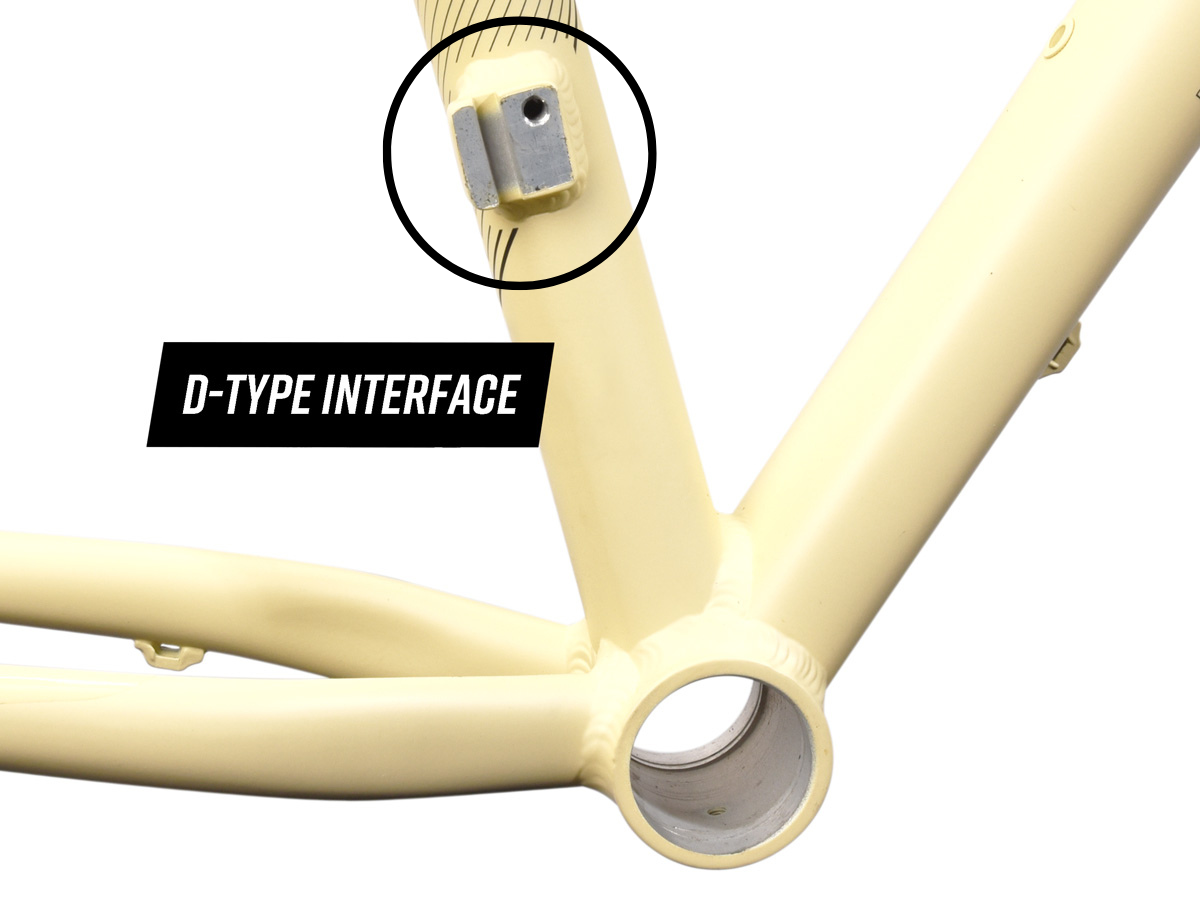
BSA Threaded Bottom Bracket
English-threaded bottom brackets, also known as BSA, are the most prevalent type on modern mountain bikes. For adapting to the ISCG05 standard, one can use an adapter that fits snugly between the frame and the external bottom bracket shell. Alternatively, our Zippa Lite BSA model is designed to fit directly between the bottom bracket and the frame, providing a stable mounting point. This method is perfect for adding chain guides to bikes with traditional bottom bracket configurations, delivering a flexible solution suitable for numerous frame styles.
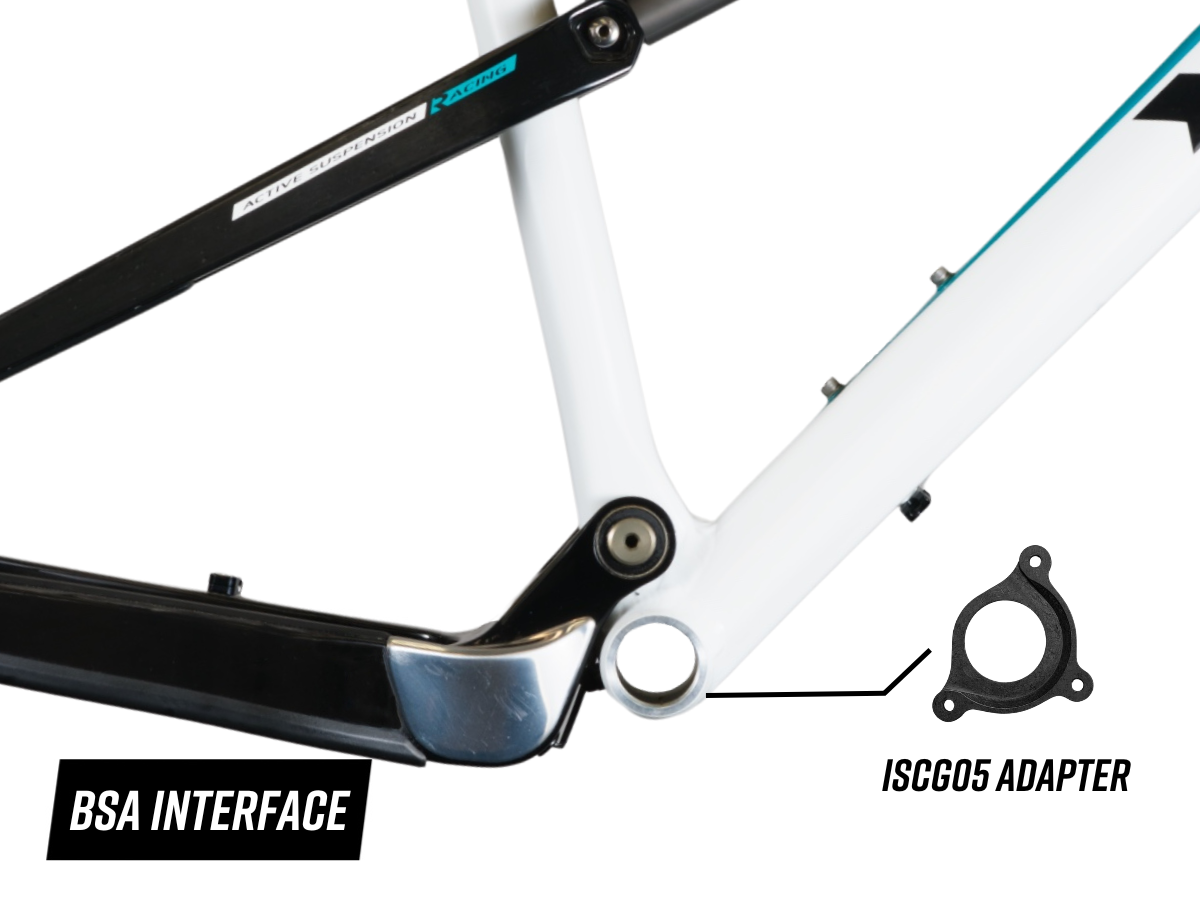
Factors to Consider When Choosing Bike Chain Guide
Once you’ve decided to equip your mountain bike with a chain guide, it’s essential to delve deeper into the factors that will help you make the right choice.
Frame Compatibility
Make sure the chain guide you pick works well with your bike’s frame. Check if it fits with your bike’s mounting standards, like ISCG, ISCG05, E-Type, D-Type, or BSA mounts. A good match ensures your guide works smoothly with your bike’s frame, improving performance and chain security.
Riding Style and Terrain
When thinking about which bike chain guide to choose, consider how you like to ride and the types of places you usually cycle. If you love speeding down hills and taking on challenging trails, you’ll probably need a strong and protective chain guide. On the other hand, if you prefer cross-country rides where the paths aren’t as rough, a lighter and simpler chain guide might be better, since you won’t need as much protection.
Chainring Size and Number
Chainring Size and Compatibility: It’s essential to note that chain guides are primarily designed for use with single-chainring setups (1x drivetrains). If your bike features a single chainring, a chain guide becomes a relevant and effective choice to ensure optimal chain retention. However, if your bike utilizes a multi-chainring setup (2x or 3x), the need for a chain guide may not be as prominent, and alternative solutions should be explored. Consider your bike’s specific drivetrain configuration when making your chain guide selection.
Ease of Installation and Maintenance
The ease of installation and ongoing maintenance can significantly impact your biking experience. Some chain guides are designed with user-friendliness in mind, making them more accessible for riders with varying levels of expertise. Evaluating how hassle-free a guide is to install and maintain can influence your decision, ensuring that it doesn’t become a source of inconvenience.
Conclusion
The mountain bike chain guide is an indispensable component for enhancing your trail experience. It ensures performance, safety, and confidence, regardless of the terrain. By understanding the various types, mounting options, and key factors for selection, you can choose the ideal chain guide that aligns with your mountain biking needs.

TYPES OF BIKE STEMS: HOW TO CHOOSE YOUR BIKE STEMS
Understanding the different types of bike stems is key to achieving the best balance between control, comfort, and performance. In this comprehensive guide, we’ll walk you through the process of choosing the right stems for your mountain bike.
Read More…
Bike Headset Types Explained: An Introduction to the S.H.I.S
The Standardized Headset Identification System, or S.H.I.S. is like a special code that helps you figure out which headset you need for your bike. With the S.H.I.S., you don’t have to guess anymore – you can find the perfect fit easily.
Read More…
WHAT IS CLIPLESS PEDALS? | BEGINNER’S GUIDE
Welcome to our comprehensive guide on clipless pedals — a valuable resource for cycling beginners who want to dive into the world of this pedal system. If you are eager to improve your pedaling efficiency and foot stability, you can’t miss out this informative guide.
Read More…

